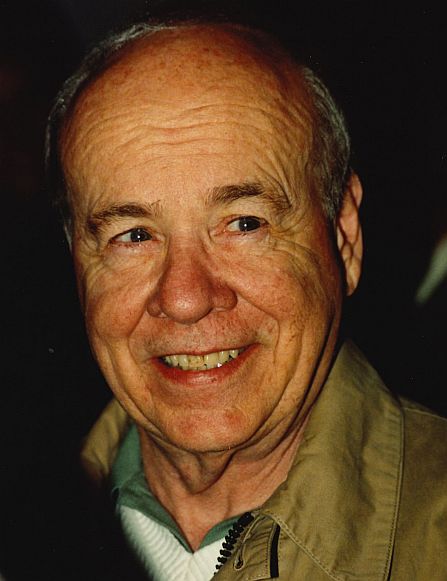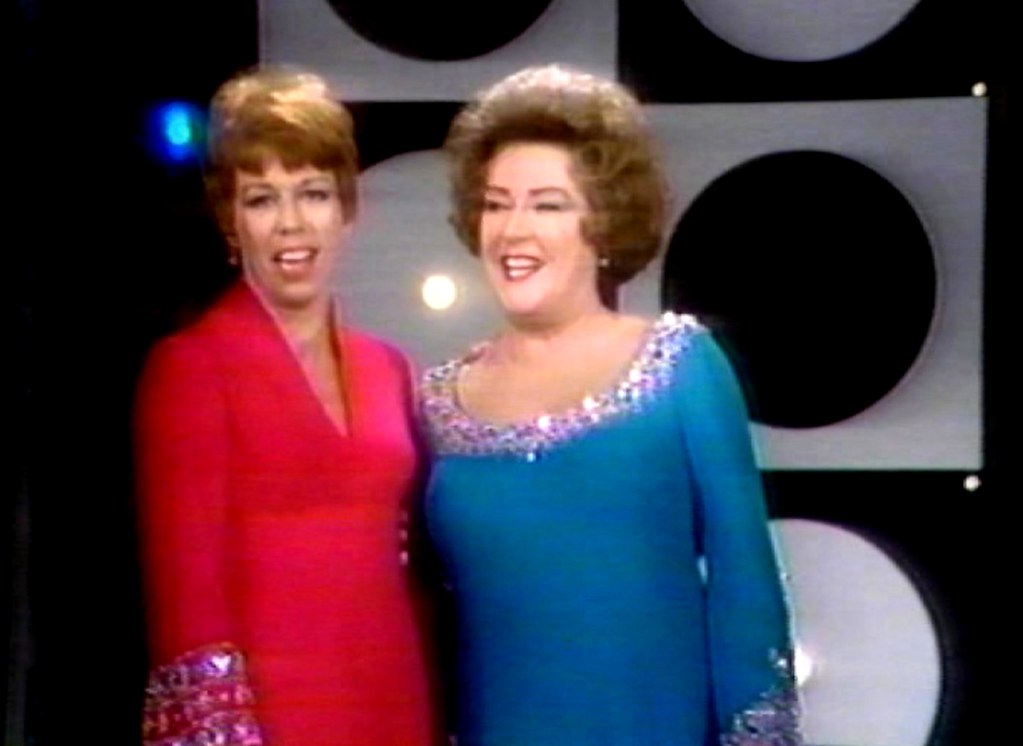
In the grand tapestry of American comedy, few threads shimmer with the genuine, unscripted brilliance of Thomas Daniel “Tim” Conway. A name synonymous with uproarious laughter and a master of the unexpected, Conway carved an indelible niche for himself, not merely as an actor but as a genuine comedic force whose influence continues to resonate. His remarkable journey, spanning decades, is a testament to an innate talent for humor that transcended conventional boundaries, making him a beloved figure across generations.
From the humble beginnings in Ohio to the bright lights of Hollywood, Conway’s trajectory was one marked by dedication, serendipity, and an unwavering commitment to making people laugh. He possessed a rare gift for comedic timing and character immersion, transforming ordinary scenarios into extraordinary moments of hilarity. This article endeavors to illuminate the multifaceted career and personal life of this esteemed artist, delving into the chapters that shaped him into the icon we celebrate today.
Join us as we embark on an in-depth exploration of Tim Conway’s path, tracing the pivotal experiences, the early struggles, and the triumphs that cemented his status as a true legend. We will peel back the layers of his career, examining the foundational roles, the groundbreaking television appearances, and the moments that defined his unique brand of comedy, revealing the man behind the masterful performances.

1. Early Life and Education: The Ohio Roots of a Comedy Titan
Thomas Daniel Conway, known to the world as Tim, entered life on December 15, 1933, in the quiet suburb of Willoughby, Ohio, near Cleveland. His upbringing in nearby Chagrin Falls provided the backdrop for his formative years, a setting far removed from the bustling studios where he would later achieve fame. His family background was a blend of rich heritage: his father, Daniel, who emigrated to the United States in 1927, hailed from Irish lineage with Scottish parents, while his mother, Sophia (née Murgoiu), was a first-generation Romanian-American.
This early exposure to diverse cultural influences, particularly his mother’s Romanian accent which he would later masterfully incorporate into one of his most iconic characters, undoubtedly contributed to his versatile comedic palette. Interestingly, his legal name was Thomas, though he was also referred to as Toma, the Romanian equivalent, and was typically known as Tom. He made the conscious decision to change his stage name to Tim early in his acting career, famously quipping that he “dotted the O” to avoid any confusion with the British actor Tom Conway.
Conway pursued his higher education at Bowling Green State University in Bowling Green, Ohio, immersing himself in the world of television and radio. This academic path was a clear indicator of his burgeoning interest in media and performance. During his time there, he honed his skills as a disc jockey and became a proud member of the Phi Delta Theta fraternity, laying the groundwork for his future in entertainment. Upon his graduation, Conway answered the call of duty, enlisting in the United States Army, where he honorably served his country between 1956 and 1958.

2. Cleveland Beginnings and Early Ventures: Forging a Quirky Brand of Humor
After completing his military service, Tim Conway returned to his native Cleveland, embarking on the initial phase of his professional journey. In 1958 and 1959, he found himself collaborating with Ernie Anderson at KYW-TV, an NBC affiliate. This partnership proved to be highly formative, as Conway and Anderson quickly discovered a shared comedic sensibility. Early in their careers, the duo acted in local TV commercials, utilizing their distinctive, quirky brand of humor to supplement their income, a clear precursor to the sketch comedy that would later define Conway’s career.
Their collaboration deepened from 1960 to 1962 at WJW-TV, then a CBS affiliate. Conway became a fixture on a weekday morning film show, operating under the “Ernie’s Place” banner. Beyond his on-screen presence, he was a key creative force, writing material for the comedic skits that were broadcast during film intermissions. This period was also marked by their joint venture into recorded comedy, with Conway and Anderson producing a comedy album together, further establishing their unique rapport and local popularity.
However, their tenure at WJW-TV came to an abrupt end in 1962, partly due to Conway (and Anderson) misleading station management about his experience as a director. This dismissal, while challenging, inadvertently opened new doors for Anderson, who then hosted a B-grade horror film show. Conway, despite his departure, continued to make many appearances alongside Anderson’s alter ego, Ghoulardi, and later with “Big Chuck” Schodowski, maintaining a connection to his Cleveland roots and local audience even after achieving national fame.

3. The Rose Marie Connection and Move to New York: A Catalyst for National Recognition
The turning point in Tim Conway’s career, the moment that truly propelled him from regional renown to national prominence, arrived in 1961. Comedic actress Rose Marie, then a star of “The Dick Van Dyke Show,” visited WJW in Cleveland as part of CBS’s promotional circuit, a practice that sent major show stars directly to local affiliates. It was during this visit that Rose Marie viewed tapes of some of Anderson and Conway’s comedic skits, immediately recognizing Conway’s raw, undeniable talent.
Deeply impressed by his unique humor and potential, Rose Marie took Conway under her wing, becoming an instrumental figure in his career. Following his dismissal from WJW, Conway, emboldened by this mentorship, made the significant move to New York City. There, with Rose Marie’s direct assistance and advocacy, he successfully auditioned for and secured a spot as a regular player on ABC’s “The Steve Allen Show,” marking his official entry into the national television landscape.
This crucial step brought him into contact with a broader audience and a new tier of comedic talent. During this exciting period in New York, he also made appearances on other significant variety programs, including “The Garry Moore Show,” “The Mike Douglas Show,” and “That’s Life.” These early national exposures were vital in honing his craft and solidifying his presence in the competitive world of television, setting the stage for the iconic roles that were soon to follow.
4. McHale’s Navy: The Bumbling Ensign Who Stole Hearts on the High Seas
It was his role as Ensign Charles Parker in the 1960s sitcom “McHale’s Navy” that truly garnered Tim Conway a national following. Playing the bumbling, naive Executive Officer of the World War II PT-73, Conway’s portrayal of Ensign Parker was a masterclass in understated physical comedy and endearing innocence. He effortlessly held his own alongside seasoned actors like Ernest Borgnine, who played the titular Lieutenant Commander Quinton McHale, and Joe Flynn, who portrayed Captain Binghamton.
Conway’s character, with his well-meaning but often disastrous efforts, quickly became a fan favorite, providing countless moments of gentle humor. The dynamic between Parker and his commanding officers, particularly Borgnine’s McHale, was central to the show’s charm. Borgnine, recognizing Conway’s unique talent and amiable nature, became both a mentor and a close personal friend, a bond that lasted a lifetime. Conway often spoke fondly of this friendship, even paying tribute to Borgnine at the 7th Annual Screen Actors Guild Awards years later, underscoring the depth of their connection.
His memorable performance as Ensign Parker not only cemented his place in television history but also earned him significant critical acclaim. The role garnered him a nomination for the Primetime Emmy Award for Outstanding Supporting Actor in a Comedy Series in 1963, an early recognition of the comedic brilliance that would come to define his career. While “McHale’s Navy” concluded its run in 1966, the character of Ensign Parker remained one of Conway’s most recognizable and cherished contributions to television comedy, a testament to his ability to imbue even a seemingly simple character with profound comedic depth.

5. The Carol Burnett Show: A Comedy Maestro Unchained and Unleashed
The 1970s brought Tim Conway to what many consider the pinnacle of his television career: “The Carol Burnett Show.” After having been a frequent and wildly popular guest for the show’s initial eight seasons, Conway officially joined the cast as a regular starting with the 1975–76 season, stepping into the void left by Lyle Waggoner. His integration into the ensemble elevated an already iconic sketch comedy series to new heights, allowing his improvisational genius to truly flourish in an environment that celebrated unscripted hilarity.
Conway’s tenure on the show was prolific, earning him a remarkable four Emmy Awards. These included one for writing, a testament to his creative contributions behind the scenes, and three for performance, one of which was notably received before he even became a regular cast member. This array of accolades underscored his undeniable impact, showcasing his versatility as both a performer and a comedic writer. He brought to life a pantheon of memorable characters, each imbued with his signature blend of absurdity and charm.
Two of his most beloved and iconic characters from the Burnett Show were Mr. Tudball and the Oldest Man. Mr. Tudball, a businessman constantly flummoxed by the bored indifference of his secretary, Mrs. Wiggins (portrayed brilliantly by Carol Burnett), was widely thought to be Swedish. However, Conway famously revealed that he based the character’s distinctive accent on the Romanian accent he learned from his own mother, adding a layer of personal history to the character’s comedic appeal. The Oldest Man, with his shaggy white hair, agonizingly slow speech, and shuffling gait, defied all logic, often placed in occupations demanding vigor, to uproarious effect. These characters, alongside many others, became synonymous with Conway’s comedic legacy, showcasing his profound ability to transform simple concepts into unforgettable comedic masterpieces.

6. The Art of Breaking Character: Conway’s Unscripted Legacy of Laughter
One of the most distinguishing and beloved aspects of Tim Conway’s performances on “The Carol Burnett Show” was his extraordinary ability to make his co-stars break character and erupt in genuine, uncontrollable laughter in the middle of a scene. This wasn’t merely a sporadic occurrence; it became a defining characteristic of the show, adding an unreplicable layer of spontaneity and joy to the comedic sketches. Often, Conway achieved this without even uttering a line of dialogue, relying instead on his physical comedy, expressions, and unexpected improvisations.
Carol Burnett herself clarified that while these instances of breaking character were incredibly memorable and added immense comedic value, they didn’t happen as frequently as many might recall. Yet, the sheer authenticity of the laughter, the real-time reactions of the other cast members struggling to maintain composure, amplified the humor, creating legendary moments that viewers cherished. These breaks underscored the palpable chemistry and deep affection among the cast, transforming staged skits into shared comedic experiences.
A prime example of Conway’s unique talent for eliciting such laughter involved Lyle Waggoner. In a sketch, Waggoner played a captured American airman undergoing interrogation by Conway, who was portraying a stereotypical blond-haired Gestapo agent. Stating that “the Fuhrer” had taken particular interest in the captive, Conway unexpectedly produced a small Hitler hand puppet. With a long, drawn-out falsetto voice and a German accent, the puppet proceeded to sing “I’ve Been Working on the Railroad.” With each passing verse, Waggoner visibly lost more of his composure, finally succumbing to hysterical laughter when puppet-Hitler screeched, “FEE-FI-Fiddely-I-O!” This sketch remains a timeless testament to Conway’s unparalleled ability to surprise and delight.
Another iconic instance, famously known as the “Elephant Story” outtake from one of the “Family” sketches, vividly illustrates this phenomenon. Conway recounts an increasingly absurd and fantastical tale about his visit to the circus. As his narrative escalated into greater ridiculousness, the other cast members – Carol Burnett, Vicki Lawrence, and Dick Van Dyke – were visibly struggling to stay in character, often looking away from Conway and the cameras in an effort to stifle their laughter. Conway eventually concluded his outlandish story, to which Vicki Lawrence, in character as Mama, delivered the now-legendary line: “Are you sure that little asshole’s through?” This comment, completely unexpected, caused everyone on set, including Conway himself, to break into uncontrollable, hysterical laughter, solidifying its place as one of the show’s most cherished and unscripted moments.

7. Venturing into His Own Series: The Tim Conway Show Experiments
After achieving widespread recognition, particularly for his contributions to “McHale’s Navy” and as a guest on various variety shows, Tim Conway embarked on several ventures to star in his own series. His first eponymous effort was “The Tim Conway Show,” a sitcom that debuted in January 1970. In this series, Conway was paired with his “McHale’s Navy” co-star, Joe Flynn, as owner-pilots of a single-plane airline, a Beechcraft Model 18 named Lucky Linda. The pressurized situation of having “nowhere to run” within the confines of a small airline provided an ideal backdrop for the fast, witty repartee between the lead actors. However, despite its promising premise, the show’s run was brief, with the last new episode airing in June 1970.
Later that same year, Conway was given another opportunity, this time an hour-long variety show titled “The Tim Conway Comedy Hour,” or sometimes referred to as “The Tim Conway Comedy House.” Following the trend of his previous solo efforts, this program also proved short-lived, lasting only a mere 13 weeks. In a display of his characteristic self-effacing humor, Conway famously ordered his car’s license plate to reflect this brief duration, emblazoning it with “13 WKS,” a playful nod to his show’s quick cancellation. This period highlighted the challenge of translating his unique comedic style into a sustained solo format, especially without the immediate, responsive chemistry of a stable ensemble cast he thrived within.
A decade later, in 1980, Conway was again given a chance to helm his own one-hour variety program, which revived the title “The Tim Conway Show.” Airing on CBS, like his earlier attempts, it debuted on March 22, 1980. This iteration was initially a full hour but was subsequently reduced to a half-hour format in the summer of 1980. It enjoyed a longer run than any of his prior self-titled series, concluding in August 1981. The format was consciously similar to that of “The Carol Burnett Show,” featuring several regular cast members—including Maggie Roswell, Miriam Flynn, Eric Boardman, Jack Riley, and Dick Orkin—performing in comedy sketches, interspersed with occasional musical performances by guest musicians. Notably, former Burnett cast member Harvey Korman also joined as a regular in late 1980, after making earlier guest appearances, alongside other Burnett alumni like Carol Burnett and Vicki Lawrence, attempting to recapture that magical ensemble dynamic. However, even with this familiar structure and talent, the show struggled to achieve the enduring success of his work as a core ensemble player, underscoring the particular environment in which his comedic brilliance truly shone brightest.

8. The Enduring Magic with Don Knotts: A Peerless Pair
As Tim Conway’s star continued to ascend, a truly special comedic partnership began to blossom, one that would delight audiences for years: his collaboration with the incomparable Don Knotts. Their paths, both having graced ‘The Steve Allen Show’ at different times, finally converged at Disney Studios. This pairing was a stroke of genius, as Knotts’s boisterous, often flustered, Barney Fife-style bungling perfectly contrasted and meshed with Conway’s quieter, subtly physical brand of comedy, creating an on-screen alchemy that was pure gold.
Their cinematic debut together was in the 1975 Disney classic, *The Apple Dumpling Gang*. In this heartwarming tale, Bill Bixby’s character is inadvertently tasked with caring for three orphans, whose discovery of a gold nugget soon attracts the attention of two lovable, if inept, holdup men: Amos Tucker, portrayed by Conway, and Theodore Ogelvie, brought to life by Knotts. The film’s commercial success swiftly led to a sequel in 1979, *The Apple Dumpling Gang Rides Again*, which, despite the absence of other original cast members, proved to be immensely profitable for Disney.
Beyond their Disney triumphs, Conway’s creative impulse extended to writing, as he penned two additional films specifically for the comedic duo. These included *The Prize Fighter* in 1979 and *The Private Eyes* in 1980. Both were independently produced and achieved remarkable success, becoming the highest-grossing independent films of their respective years. Their undeniable chemistry transcended studio boundaries, proving their comedic appeal was universally cherished.
Their collaborations didn’t cease with these feature films. The pair also made a memorable cameo in the action-comedy *Cannonball Run II*. In their later years, their voices graced the beloved Christian children’s series, *Hermie and Friends*, where Conway voiced Hermie the caterpillar and Knotts lent his talents to Wormie. This enduring partnership, built on mutual respect and impeccable comedic timing, stands as a testament to their profound impact on American comedy, leaving behind a legacy of laughter that continues to resonate.

9. The Phenomenon of Dorf: A Pint-Sized Comedic Universe
In the 1980s, Tim Conway unveiled a character that would become an unexpected, yet wildly popular, extension of his comedic genius: Dorf. This diminutive, dark-haired Scandinavian figure, whose name itself was a playful variation on “dwarf,” first captivated audiences with his hilariously satirical how-to videos. Dorf’s distinctive, goofy accent, famously reprised from Conway’s Mr. Tudball character, added another layer of absurdity, instantly making him a fan favorite.
The character’s official debut occurred on *The Tonight Show Starring Johnny Carson* on January 3, 1986, where Conway, as Dorf, portrayed a horse jockey. This appearance was an immediate hit, paving the way for *Dorf on Golf* in 1987. What began as a single comedic video soon blossomed into an entire series, with Dorf hilariously demonstrating various sports from baseball to auto racing, each installment a masterclass in Conway’s physical comedy and deadpan delivery.
The enduring appeal of Dorf led to a series of eight films, culminating in the comprehensive *The Ultimate Dorf DVD Collection*, which has impressively sold over 3 million copies. This collection not only remastered all eight films but also featured exclusive behind-the-scenes content and a commentary track by Conway himself on “The Legend of the Paddle: The Oldie Hollis Story.” Dorf’s versatility even extended to a memorable appearance on *Tim Conway’s Funny America* in 1990, where he led an aerobics class on his impossibly short legs, showcasing the boundless comedic possibilities of the character.
In a delightful modern twist, beginning in 2009, Conway’s Dorf character embarked on a new, festive venture, “helping” Santa Claus on the website iSpotSanta. Across three short films and over 25 comedy sketches for the site, Dorf’s earnest but chaotic attempts to assist Santa—from trying to deliver a Christmas list with jet rockets to accidentally hitting Santa with a golf ball—garnered over 35 million viewers. Conway himself expressed his joy in this collaboration, stating on the Disney Channel that Pasquale Murena, his collaborator, had “done more with Dorf than I ever imagined,” underscoring the character’s profound and lasting appeal.

10. A Disney Legend: Beyond Television into Film
While Tim Conway’s television work solidified his place in the annals of comedy, his ventures into the cinematic world, particularly with Disney, further broadened his appeal and cemented his status as a beloved entertainer. Beyond his notable collaborations with Don Knotts, Conway graced the big screen in a variety of family-friendly films, showcasing his ability to translate his unique humor to a different medium.
His association with Disney was particularly fruitful. He starred in the 1973 comedy *The World’s Greatest Athlete*, bringing his characteristic charm to a whimsical narrative. This was followed by his role in *Gus* (1976), a delightful film about a football-playing mule, further endearing him to a generation of young viewers. His consistent and cherished contributions to the company’s cinematic output were recognized with the prestigious Disney Legend award in 2004, a testament to his lasting impact on family entertainment.
Conway’s filmography extended beyond the House of Mouse, encompassing a range of projects that allowed him to explore different facets of his comedic talent. He took on the lead in the 1977 comedy *The Billion Dollar Hobo* and showcased his writing skills for *The Longshot* in 1986, a film that reunited him with his beloved comedic partner Harvey Korman. Later in his career, he appeared as Fred Davis, the main announcer for the Timberwolves’ final game, alongside Dick Martin as his co-announcer Phil Phil in *Air Bud: Golden Receiver* (1998), continuing to bring his distinctive voice to popular films.
Another memorable film appearance was his portrayal of postal employee Herman Dooly in the 1996 film *Dear God*. Whether playing a bumbling sidekick, an earnest protagonist, or a quirky supporting character, Conway brought a distinct warmth and authenticity to every role. His film career, though sometimes overshadowed by his television renown, stands as a significant part of his legacy, illustrating his versatile talent and broad appeal across different entertainment platforms.
Product on Amazon: The Odd Sisters: A Villains Novel
Brand: Audible
Binding: Audible Audiobook Product Group: Audible
Price: 13.09 USD
Rating: 4.8 Total reviews: 4890
Top Review from US: “*May contain some spoilers for those who haven’t read the series.*WOW! What an astounding tale!After finishing Mother Knows Best, I was quite anxious to learn the fate of the odd sisters. Serena Valentino took me on a journey of incredible discovery.The Odd Sisters is the story of Circe and Snow White and their search for answers about Circe’s mothers. Circe must decide the fate of Lucinda, Ruby, and Martha, and Snow White wants to make sure Circe knows the whole story.Their journey takes them to “The Beginning,” described as “a celestial landscape filled with stars and swirling constellations.” The Beginning sounded so beautiful that I closed my eyes so I could go there – even if only for a moment.Circe knows that all the kingdoms have been touched by her mothers’ evil. Circe also feels responsible because her mothers, in their minds, felt that everything they did – all the death and destruction – was justified because they were doing it out of love for Circe and their desire to keep… …”
Shopping on Amazon >>
Read more about: 12 Famous People Who Used Social Media to Launch Their Career: How Viral Moments Led to Stardom

11. The Power of His Voice: From SpongeBob to Animated Worlds
As Tim Conway’s live-action career evolved, his distinctive voice became an increasingly vital tool in his comedic arsenal, opening up a rich and extensive chapter in voice acting. His ability to craft unique vocalizations, coupled with his improvisational genius, made him a sought-after talent in the world of animation, allowing him to bring beloved characters to life for new generations.
Perhaps his most iconic voice role was that of Barnacle Boy in Nickelodeon’s sensation, *SpongeBob SquarePants*. Alongside his good friend Ernest Borgnine, who voiced Mermaid Man, Conway brought the aging, often grumpy, superhero sidekick to life. Series creator Stephen Hillenburg and creative director Derek Drymon specifically envisioned the voices of these characters with Conway and Borgnine in mind from the very beginning, having been avid fans of their work on *McHale’s Navy*. Both actors enthusiastically accepted, cementing their legendary reunion.
Conway’s voice lent itself to a myriad of other cherished animated television shows and films. He made memorable appearances in *The Simpsons*, contributed to the Disney spin-off *Hercules*, and voiced characters in *Lloyd in Space*, *The Wild Thornberrys*, *The Proud Family*, and *What’s with Andy?*. His versatility was evident in roles ranging from The New Scooby-Doo Movies to *WordGirl* and *Caillou*, demonstrating his widespread appeal across various animation styles and target audiences.
Even in his later years, Conway continued to leave his vocal mark. He narrated *The Secret Shortcut* in *Reading Rainbow* and hosted *The Flintstones’ 25th Anniversary Celebration*. From 2003 to 2010, he starred as Hermie in Max Lucado’s animated video series, *Hermie and Friends*, a spiritual successor to his work with Don Knotts, continuing the beloved caterpillar duo. His final voice acting role, a poignant capstone, was as one of the talking seagulls in *The SpongeBob Movie: Sponge Out of Water*, ensuring his voice would be heard by fans even after his retirement from live acting.

12. Later Life, Memoirs, and Philanthropy: A Legacy Beyond the Screen
Beyond the laughter and the lights, Tim Conway’s later years revealed a man of deep personal reflection, family devotion, and quiet generosity. He was married to Mary Anne Dalton from 1961 to 1978, with whom he had six children. Later, he found enduring companionship with Charlene Fusco, marrying her on May 18, 1984, a union that lasted until his passing and brought him a stepdaughter, Jacqueline “Jackie” Beatty, giving him seven children in total.
In a candid exploration of his extraordinary life, Conway penned his memoir, *What’s So Funny?: My Hilarious Life*. The book quickly resonated with readers, earning a coveted spot on The New York Times Best Seller list during its inaugural week. This literary endeavor offered fans a rare glimpse into the mind of the comedic genius, sharing anecdotes, insights, and the often-unscripted hilarity that defined his career.
Conway’s compassion extended far beyond the stage and screen, manifesting in significant philanthropic efforts. In June 2010, he returned to his hometown of Chagrin Falls, Ohio, to host fundraising performances at the Chagrin Valley Little Theatre, demonstrating his commitment to supporting local arts. He also served as a dedicated spokesperson for the United Leukodystrophy Foundation, raising awareness and funds for a cause close to his heart.
A keen enthusiast of thoroughbred horse racing, Conway was not merely a spectator but also an occasional racehorse owner. This passion led him to co-found and serve as vice-president on the board of directors for the Don MacBeth Memorial Jockey Fund, further illustrating his dedication to causes within the racing community. In a deeply personal revelation, Conway shared in a 2013 interview on the podcast *Christopher Closeup* that he had returned to Catholicism, the faith of his birth, a journey also affirmed in an interview with Raymond Arroyo on EWTN’s *The World Over*.

13. Awards, Honors, and the Hollywood Walk of Fame: Acknowledging a Titan
The illustrious career of Tim Conway was not only marked by widespread public adoration but also by a remarkable array of industry accolades and honors that cemented his status as a comedic titan. His profound talent, versatility, and enduring appeal were recognized across decades, culminating in some of entertainment’s most prestigious awards.
His seminal work on *The Carol Burnett Show* proved to be a goldmine of recognition, earning him an impressive four Emmy Awards. These included one for writing, a testament to his creative input beyond performance, and three for individual performance in a variety or music program. Even before becoming a regular cast member, his guest appearances were lauded, earning him one of these coveted statuettes, highlighting his immediate and undeniable impact on the show’s comedic success.
Conway’s excellence extended beyond this iconic program. He received two Primetime Emmy Awards for Outstanding Guest Actor in a Comedy Series, first for his memorable role as Kenny Montague in the ABC comedy series *Coach* in 1996, and later for his portrayal of Bucky Bright in the *30 Rock* episode “Subway Hero” in 2008. These awards underscored his consistent ability to steal scenes and leave a lasting impression, even in brief appearances. A Golden Globe Award for Best Supporting Actor in a Series, Miniseries, or Television Film in 1976 further solidified his critical acclaim.
Beyond the awards, Conway received lasting honors that enshrined his legacy. In 1999, he was rightfully bestowed with a star on the Hollywood Walk of Fame, a permanent tribute to his contributions to entertainment. Just three years later, in 2002, he was inducted into the Television Hall of Fame, recognizing his lifetime achievement and profound influence on the medium. These accolades, alongside his Disney Legend award and even a nod to his Ghoulardi roots with an induction into the Horror Host Hall of Fame, painted a comprehensive picture of a career defined by unparalleled comedic brilliance and heartfelt dedication.
Product on Amazon: Personalized Hollywood Walk of Fame Star Print, Unframed
Brand: TypologiePaperCo
Binding: Product Group: Guild
Price: 8 USD
Rating: 4.3 Total reviews: 37
Features:
1. PRINT SIZES: Sizes vary from 4×6 inches to 24×36 inches
2. PRINT ORIENTATION: Portrait, Landscape, and Square
3. PRINTING: Each poster is printed at 300 DPI on durable, high-quality white matte luster photo paper.
4. SHIPPING: Prints ship safely in a sturdy protective tube or rigid mailer.
5. PLEASE NOTE: Due to monitor differences, actual colors may vary slightly from what appears online.
Top Review from US: “This was a gift for my granddaughter for her first dance recital seen by me. It was really done beautifully”
Shopping on Amazon >>

14. A Final Bow: Illness and the Passage of a Comedy Icon
The later years of Tim Conway’s life brought challenges that eventually led to his quiet retirement from the world of performance. As early as 2012, following the passing of his long-time friend Ernest Borgnine, Conway retired from his voice role as Barnacle Boy on *SpongeBob SquarePants*. By 2016, health issues had necessitated his complete retirement from acting, a quiet retreat from the limelight he had so brilliantly illuminated for decades.
In September 2018, the details of these health struggles became more apparent when he was diagnosed with dementia due to normal pressure hydrocephalus. This condition necessitated surgery for the placement of a ventricular shunt. The diagnosis, unfortunately, led to a public legal battle concerning his care, as his daughter Kelly and his wife Char both sought sole conservatorship over his health, with Kelly advocating for him to remain at home for privacy.
Ultimately, Judge Robert Wada ruled against Kelly’s petition, and in March 2019, his wife, Charlene Fusco, was appointed as his conservator. This decision aimed to ensure he received the best possible care during his declining health, allowing his family to focus on his well-being in his final months.
On May 14, 2019, at the age of 85, the world mourned the passing of Thomas Daniel “Tim” Conway. He died from complications of normal pressure hydrocephalus at a care facility in Los Angeles, leaving behind an indelible legacy of laughter and an outpouring of grief from fans and colleagues alike. His passing marked the end of an era for many who grew up with his unique brand of humor, but his comedic spirit continues to live on through his timeless performances.

15. Tributes from Peers: The Profound Impact of a Beloved Human Being
The news of Tim Conway’s passing elicited an immediate and profound outpouring of tributes from across the entertainment industry, underscoring not only his comedic genius but also his cherished reputation as a kind and loving individual. Actors, comedians, and cultural figures shared their heartbreak and admiration, reflecting on the immeasurable joy he brought to their lives and to the world.
Close friend and fellow comedic legend Bob Newhart offered a particularly poignant statement. He recalled an Emmy Awards ceremony where Harvey Korman won, and Conway, without saying a word, went up and stood right next to him on stage in a moment of pure, unscripted camaraderie. Newhart confessed, “We lost one of the greatest today – Tim Conway may be the greatest ever. Ginnie and I will miss him greatly,” a sentiment that echoed widely across Hollywood.
Perhaps the most heartfelt tribute came from his long-time creative partner and dear friend, Carol Burnett. Her statement perfectly encapsulated the essence of their bond and his impact: “I’m heartbroken. He was one in a million, not only as a brilliant comedian but as a loving human being. I cherish the times we had together both on the screen and off. He’ll be in my heart forever.” This powerful message resonated deeply, acknowledging the rare blend of talent and humanity that defined Conway.
Numerous other luminaries, including Dick Van Dyke, Patton Oswalt, Ben Stiller, Billy Gardell, Ed Asner, Neil Patrick Harris, Jamie Lee Curtis, Larry King, Judd Apatow, Vicki Lawrence, and Conan O’Brien, shared their memories and sorrow. Their collective tributes painted a picture of a man who not only mastered the art of comedy but also touched countless lives with his warmth, humility, and genuine spirit. Tim Conway’s legacy is not just one of laughter, but of profound human connection, leaving an enduring imprint on the hearts of many.
Tim Conway’s remarkable journey through life and comedy leaves us with an enduring legacy of joy, spontaneity, and a profound appreciation for the power of genuine humor. From the unassuming Ohio boy to the legendary improv maestro who could bring entire casts to their knees with laughter, his career was a masterclass in comedic artistry. He taught us the value of the unexpected, the charm of the understated, and the sheer delight of a shared, unbridled giggle. Though his final bow may have been taken, the echoes of his laughter will forever reverberate, a timeless soundtrack to the extraordinary life of a man who truly was one in a million. His spirit, forever etched in the golden age of television and beyond, continues to inspire and remind us all that sometimes, the greatest humor springs from the most authentic heart.



